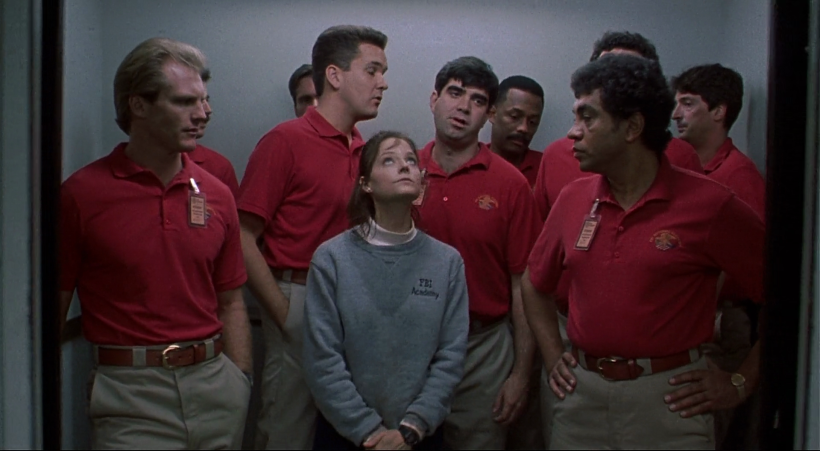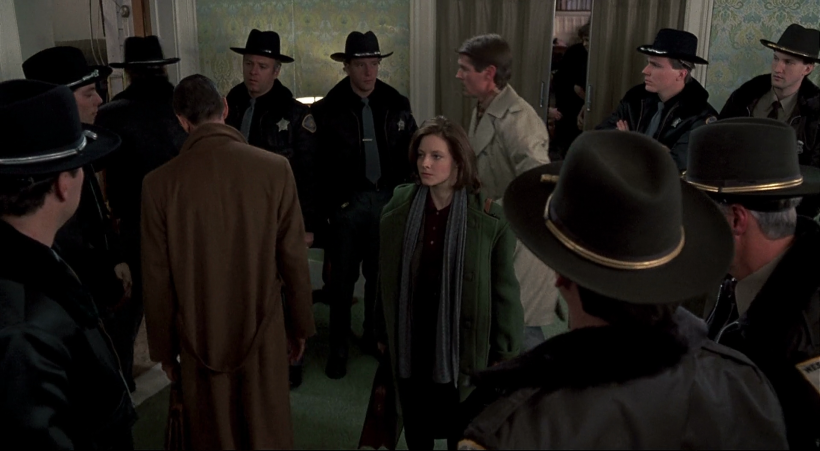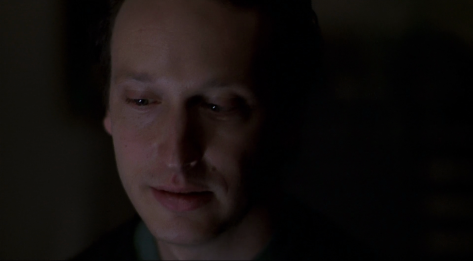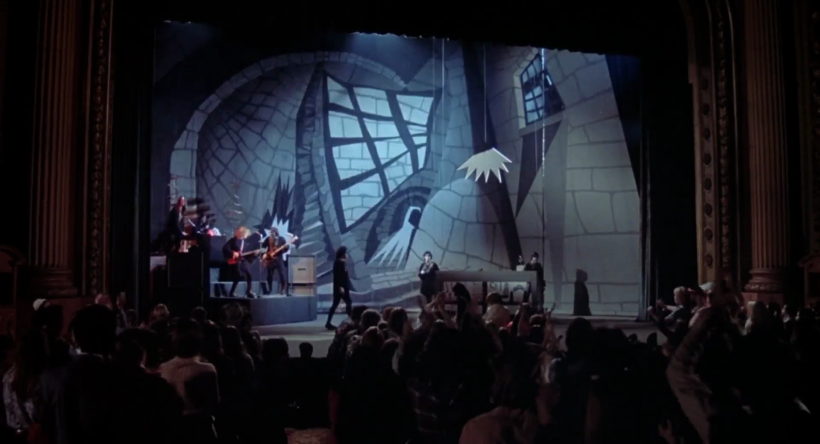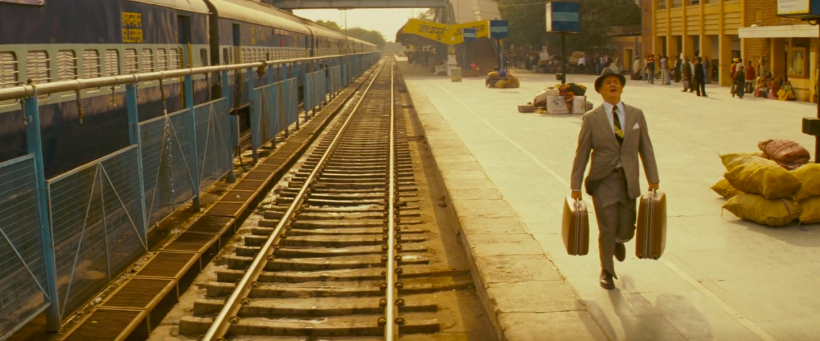Andrew Rooke NPF 551
What is the Future of
Interactivity and Networking?
In many ways, Interactivity and Networking is a difficult term to define. After all, a quick Wikipedia search of the two words together returns nothing remotely relevant. Interactivity is defined as “allowing or relating to continuous two-way transfer of information between a user and the central point of a communication system, such as a computer or television”. This is possibly the simplest way to define the term. Networking, on the other hand, has dozens of potential meanings throughout the English language. Looking at it in the context of interactivity, however, and it becomes obvious that we are meant to define it as a method of human interaction. Thus, combining the two terms, we can see that interactivity and networking can, at a basic level, mean human interaction using the transfer of information as a medium. Taking a step away from analysis, it is obvious that this topic is meant to regard processes such as cell phone text messages, social networking websites like Facebook, and mobile applications such as Foursquare. To anyone reading this article in 2012, the answer to the question stated in the title should be rather obvious. The prevalence of mobile and internet-reliant devices in the past ten years as grown at a rate so quickly that it is only rivaled by continually growing ways to communicate with others using these devices. However, just because an answer is obvious does not mean that the reasons for it are. This essay will attempt to explain why the future of interactivity and networking is a promising one, by examining the future of the subject, as well as the past and present.
One of the most important aspects of interactivity and networking is that of social networking. The current social network king, Facebook, has interactivity with thousands of applications and websites across the world. Those who haven’t seen The Social Network may be confused as to how something so global could be less than ten years old. Shortly after the creation of the world wide web, people had already attempted to use it not only for information, but as a medium to connect with others. Some examples of early attempts include Geocities and Classmates.com. Commonly known features from the present day such as user profiles and photos only emerged years later, with Friendster taking full advantage and popularity with these features in the early 2000s. Despite its waning importance in the online community, MySpace deserves recognition as the previous reigning champion in the social networking wars, becoming one of the top most visited websites in the world in 2005. All of that changes with Facebook in 2004. Although at first glance, it would appear that the two sites were very similar to each other. However, it is interesting to note that MySpace had way more customization options available to users than Facebook did, as well as being available to everyone from its inception, not just college students. However, because of ease of use and continual innovations, Facebook overtook MySpace, and remains one of the most popular websites in the world to this day. Despite Google’s efforts with Google+ to improve upon many of Facebook’s features, it was unable to surpass it in popularity. This could be because the two are so similar in terms of features, and either the convenience to stay or brand loyalty for Facebook was too strong for users to leave. Another key factor in Facebook’s success is how it interacts with other applications. Thousands of websites have the ability to “share on Facebook”, and it is methods like this that allow Facebook to become a part of thousands, if not millions of users’ daily lives. Despite the huge success this website has had, the upward trend in new users is starting to plateau. Not only that, but of existing users, a fraction is starting to spend less time on Facebook. The website is in no danger of becoming irrelevant anytime soon, but if the site continues to remain static in face of these changes, another Google+ type competitor could wipe it out in the future. Until then, the website has proven hugely profitable, proving the simple efficacy of placing ads on websites.
Another incredible example of technology that is comparatively recent juxtaposed to its global presence is the mobile or cellular phone. Only commercially available beginning in the 80s, as the technology for cellphones improves, more and more people began buying them. Today, literally billions of people own a handheld mobile phone of some sort, totaling an estimated, staggering 87% of the totally population of Earth. With such incredible figures, it is no wonder that these devices are used daily to connect with others in ways the original inventors would have never though possible or likely. An important tool has come out of the popularity of mobile phones, and that is texting. For many, texting is a more suitable alternative to talking on the phone, providing near instant interaction, but with the ability to “think before you speak”. The act of texting has reached all forms of human living, and has formed many niches. Students in schools across the world text constantly during class, dividing their attention from what they should be learning. In addition, texting has created an extremely easy way to cheat on exams, whether that is receiving answers in the classroom, or going to the bathroom to text a friend for an answer (nowadays, one could easily retreat to a washroom and look up the answer using their 3G internet). Beyond the school system, young people continue to text almost every minute of every day, a level of interaction with their friends that has not been seen in any generation previous to this one. Texting has also had effects on the language of the human race, with terms such as “LOL” (laugh out loud) becoming a part of daily speech, even outside of texting. Some couples also participate in sexting, where sexually explicit messages with the intention of arousal are exchanged throughout the day. These days, business professionals also text throughout the day, as sending an important message on the go can be accomplished this way instead of a phone call, if preferable.
As previously mentioned, modern phones can go far beyond texting in terms of capabilities. Smart phones are quite literally mobile computers with phones built into them. Each one runs on an operating system, similar to a computer. In addition to that, instead of programs, applications known as “apps” are available to most smartphones, with thousands of apps ranging from games to weather to maps, just like a computer. The main difference is that, because of satellites, a smart phone can provide its user with a mobile Internet connection. Thus, blogs can be updated, email can be checked, and nearly anything someone can do on a computer, they can now do on their phone. The exciting part is, every year the technology of these phones improves exponentially. It is safe to say that in twenty years, these phones may replace both portable gaming consoles and laptop computers completely. The factor of always available internet makes this generation susceptible to a sort of “constant availability” syndrome, where a person should always be able to be contacted at any time of the day, and where no one would ever dream of leaving their phone at home. This reliance on technology is only going to get worse as the years go by, but a more connected society may not be a bad thing, but it might not be a good thing either.
The main contributors in the rapid advancement of the smart phone phenomena are Apple’s iPhone and iOS, and Google’s Android Operating System. Both of these make application support easy for developers, and their interfaces are intuitive and easy for users to use. A main component for getting around the lack of a mouse for navigating a smart phone like a computer is the touch screen. At first a luxury, if not novel inclusion in phones, it is more or less essential for a smart phone to have a touch screen these days to work with most operating systems, and some forego the keyboard/buttons aspect altogether. The fact that a baby can operate devices like an iPhone or iPad perhaps shows both how intuitive these systems are, and how dialed in our current generation is becoming.
It is safe to say that any young person with means living in this current generation enjoys playing video games. Starting off as a fringe hobby in the 80’s, video gaming has become the biggest industry in the world, with profits consistently beating those of even motion pictures. As gamer culture becomes more main stream, so does the ability for gamers to interact with each other. The biggest example of this can be found in massively multiplayer online games, or MMOs. In these games, large amounts of people can interact with each other in a digital space. The number can be as high as millions of people, in cases of games such as Final Fantasy XI and World of Warcraft. These MMO games go far beyond simple entertainment however. Given that large amounts of people are interacting with each other in space that is limited by rules, cultures start to emerge from the separate games. Politics and player’s own rules take shapes, and economies can be formed, whether set in place by the game’s original developers, or sparked by the players themselves. Often times, real world value is assigned to digital items within the game, and often for ridiculous prices (the author of this essay would like to admit he has spent eight dollars on a pair of glasses for the game Team Fortress 2, despite them not changing the gameplay in any way). Games like WoW will continue to flourish due to developer support, but with new ideas for MMO games constantly in development, it is safe to say that one day, these concepts will be applied to an even greater scale in a digital space, and perhaps one that further extends into our own reality.
It would unfortunately be impossible to talk about online gaming culture and its importance without mentioned Linden Lab’s Second Life. Instead of being a MMO game where culture evolves around it, Second Life only has the purpose of simulating, or even replacing, the current reality of those playing it. In this game, you make an avatar that represents you, and are free to do whatever you want in the digital space. Thousands of locations exist within the game to visit, and the website claims to have over twenty-one million registered accounts. Perhaps more than any other MMO, Second Life possesses its own culture, politics, and economy. In game real estate can prove to be a huge commodity, with absurd prices being fetched for things like private islands, despite having literally no real world value. Organizations based around hobbies, religions, fetishes, and all sorts of special interests are common in this game, where players can feel free to be themselves without the judgement or consequences of real life. Second Life is a milestone in the development of Interactivity and Networking in gaming. However, its user base has begun to wane, and although it still remains very popular, the revolutionary ideas that resulted because of its creation do not seem all that important anymore, and thus, the project is slowly losing the curiousity of those who study online gaming interactions.
In a sort of hybrid combination of Facebook and text messaging, Twitter has become one of the most important internet services available in the world. In this service, one simply writes a few lines of whatever they want to say, similar to Facebook’s wall feature. This can be read by friends or whoever is following your account. In this narcissistic generation of individualism, it is not hard to see why this website has grown to the enourmous proportions it has today, with over 500 million people using it daily. Again, a key factor in Twitter’s success is not only computer functionality, but also mobile access via smart phones. Twitter has gone beyond being used socially between members, but also as a way for outlets to deliver news, for people to ask questions during organized conferences, and to stalk favourite celebrities. It is important to note that, unlike Facebook, Twitter’s popularity shows no signs of slowing down. It is essentially impossible to be a celebrity and not have a Twitter, unless you are Bill Murray. The service’s enduring and increasing popularity could be due to how simple it is to use, as many of its core concepts have not been radically altered since Twitter’s inception in 2006.
The most interesting thing in all of this talk about Interactivity and Networking is the concept of time. Huge, globe spanning entities such as Twitter and Facebook have literally been around for under 10 years. Despite this however, they are a part of million’s of people’s daily lives, and it happened what could be considered, by cultural standards, overnight. The interesting thing about this is that the speed that these technologies are improving and new services are being created, it is impossible to say whether or not these “staples” of the current generation will be all but forgotten in the next 20 years. Even if Facebook and Twitter becomes relics of the past, it is a sure bet that their concepts, from social networking to personal information sharing, will remain important parts of whatever it is that eventually replaces them.
Perhaps the only surefire success in the future of this concept is that of online gaming. Every year, people spend more and more revenue on video games, and there is a global shift for young people away from sports and towards playing video games online. This is a trend that is only going to increase exponentially in the next generation. Already there are real world organizations and tournaments for online gaming. In as little as the next 10 years, online gaming will reach new levels of importance for the global community, and nothing can stop this inevitable progress.
Interactivity is a vague, large topic, but at the same one, a very specific one. It is specific in the sense that it really only applies to the current generation we are in. The previous few generations have done well to adapt to the cultural norms all of this technology has brought into this world, but it is the next generation that will truly decide the fate of the human species. Our reliance on this technology to communicate with others and fulfill our own needs for human companionship has yet to be determined to be a positive or negative aspect of the human condition. The fact that interactivity and networking will grow even more prevalent in the future of humanity is certain. Whether it will lead to a happier, better-connected society or one of deluded people and false friendships, however, is not as crystal clear.
Bibliography
“Journal of Virtual Worlds Research.” Understanding “Gold Farming” and Real-Money Trading as the Intersection of Real and Virtual Economies. N.p., n.d. Web. 05 Dec. 2012.
Kadushin, Charles. Understanding Social Networks: Theories, Concepts, and Findings. New York: Oxford UP, 2012. Print.
Kirkpatrick, David. “Facebook Founder Mark Zuckerberg on Social Networking.” CNNMoney. Cable News Network, 06 Oct. 2006. Web. 07 Dec. 2012.
“Sara M. Grimes.” University of Toronto-Sara Grimes. N.p., n.d. Web.








